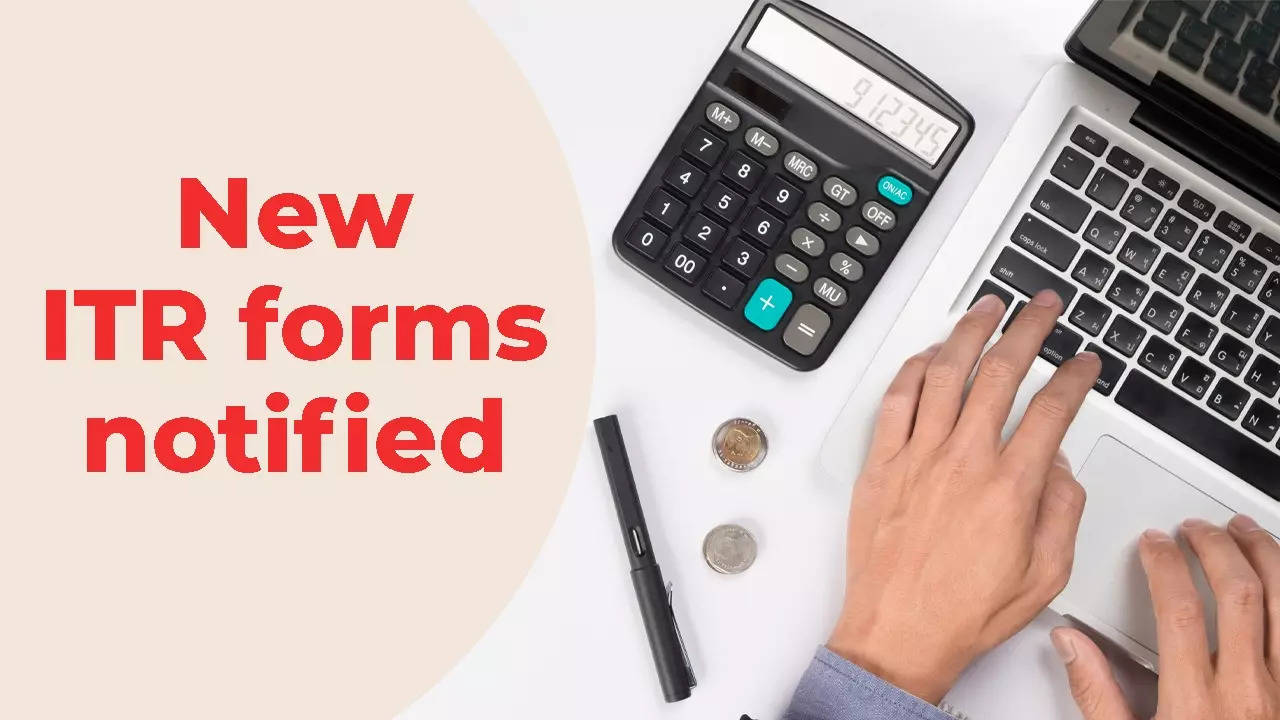ITR-1, ITR-4: New ITR forms for income tax return filing FY24 notified by CBDT

[ad_1]
The last date to file ITR for the fiscal year 2023-24 (assessment year 2024-25) is July 31, 2024, unless the government extends it.The Income Tax Department issued the notification on December 22, 2023, according to an ET report.
Unlike last year, when the income tax department notified the ITR forms for the fiscal year 2022-23 (assessment year 2023-24) in February 2023, just after the Budget 2023, this year the ITR forms have been notified three months before the current financial year ends on March 31, 2024. However, it’s important to note that taxpayers will not know their exact total income until the financial year concludes.
Who can file ITR-1?
ITR-1 is specifically designed for individuals who meet the following criteria:
- They are resident individuals.
- Their total income from all sources does not exceed Rs 50 lakh.
- Their income sources can include salary, income from one house property, and other sources like interest, dividends, and agriculture income up to Rs 5,000.
However, individuals who meet the following conditions cannot use ITR-1:
- They are directors in a company or have invested in unlisted equity shares.
- They have faced TDS on cash withdrawals under section 194N or have deferred income tax on ESOP.
- They have income from sources other than those mentioned above, such as capital gains and income from two house properties.
When filing ITR for the fiscal year 2023-24 (assessment year 2024-25), individuals will need to specifically select the old tax regime if they choose to opt for it. In the online ITR form, they will be required to ‘opt-out’ from the new tax regime, which has been made the default tax regime by Budget 2023.
If an individual doesn’t opt out, the online ITR form will automatically calculate taxes using the income tax slabs of the new tax regime. It’s important to note that the new tax regime disallows common deductions and tax exemptions such as HRA and LTA tax exemptions, Section 80C, and 80D. However, the standard deduction of Rs 50,000 from salary income and the deduction claimed under Section 80CCD (2) of the Income-tax Act are available under the new tax regime from the fiscal year 2023-24 (assessment year 2024-25). The Section 80CCD (2) deduction is also applicable to the employer’s contribution to the National Pension System (NPS) under the new tax regime.
New Income Tax Regime Vs Old Regime: It’s IMPORTANT TO DECIDE NOW | Income Tax Slabs 2023-24
On the other hand, the ITR-4 form is for individuals and Hindu Undivided Families (HUFs) who are residents in India and have income from business and profession. This income should not exceed Rs 50 lakh in a financial year. Additionally, the income must be computed under Sections 44AD, 44ADA, and 44AE. Those eligible to file ITR-4 will also have to opt out of the new tax regime if they do not wish to use it, as the new tax regime will be the default regime in the ITR.
#ITR1 #ITR4 #ITR #forms #income #tax #return #filing #FY24 #notified #CBDT






